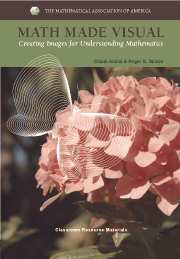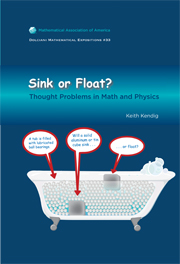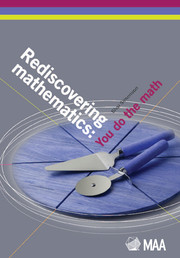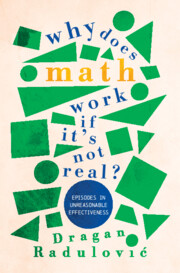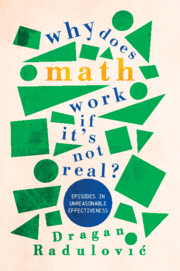Math Made Visual
The object of this book is to show how visualization techniques may be employed to produce pictures that have interest for the creation, communication and teaching of mathematics. Mathematical drawings related to proofs have been produced since antiquity in China, Arabia, Greece and India but only in the last thirty years has there been a growing interest in so-called 'proofs without words.' In this book the authors show that behind most of the pictures 'proving' mathematical relations are some well-understood methods. The first part of the book consists of twenty short chapters, each one describing a method to visualize some mathematical idea (a proof, a concept, an operation,...) and several applications to concrete cases. Following this the book examines general pedagogical considerations concerning the development of visual thinking, practical approaches for making visualizations in the classroom and a discussion of the role that hands-on material plays in this process.
- Shows how images can provide understanding in the creation and teaching of mathematics
- Dispels the myth that picture-based proofs are the result of serendipitous discovery or exceptional ingenuity
- Gives many challenges to allow the reader to practise their newly acquired abilities
Product details
July 2006Hardback
9780883857465
190 pages
261 × 183 × 16 mm
0.495kg
242 b/w illus. 5 tables 108 exercises
This item is not supplied by Cambridge University Press in your region. Please contact Mathematical Association of America for availability.
Table of Contents
- Introduction
- Part I. Visualizing Mathematics by Creating Pictures:
- 1. Representing numbers by graphical elements
- 2. Representing numbers by lengths of segments
- 3. Representing numbers by areas of plane figures
- 4. Representing numbers by volumes of bodies
- 5. Identifying key elements
- 6. Employing isometry
- 7. Employing similarity
- 8. Area preserving transformations
- 9. Escaping from the plane
- 10. Overlaying tiles
- 11. Playing with several copies
- 12. Sequential frames
- 13. Geometric dissections
- 14. Moving frames
- 15. Iterative procedures
- 16. Introducing colors
- 17. Visualization by inclusion
- 18. Ingenuity in 3D
- 19. Using 3D models
- 20. Combining techniques
- Part II. Visualization in the Classroom
- Part III. Hints and Solutions to the Challenges
- References
- Index.

